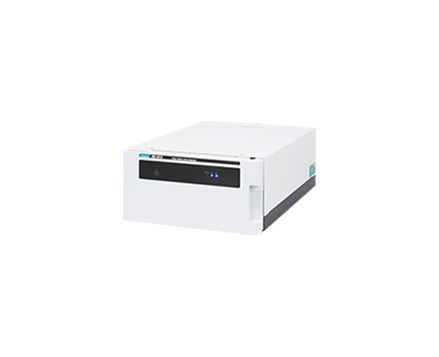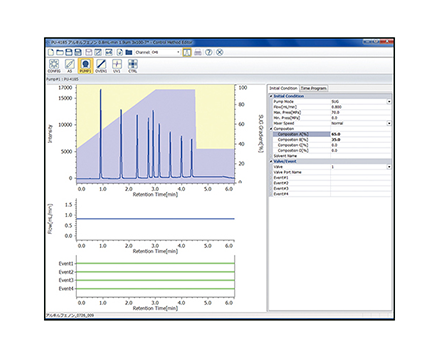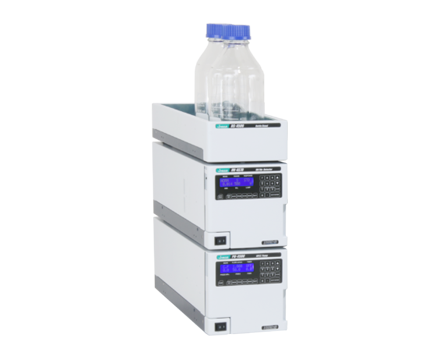Analysis of Anti-Flatulent Compounds using HPLC-ELSD
August 19, 2022
Introduction
Medicines contain various active ingredients and for analyzing such ingredients simultaneously, a gradient elution method requiring high sensitive detection is required. When analyzing medicines in gradient mode an evaporative light scattering detector (ELSD) is useful because it can detect almost any compound with the exception volatile components with high sensitivity and provides a stable baseline.
In this report, some ingredients contained in an anti-flatulent were analyzed using ELSD and PDA detection. Stearic acid is used as a lubricant for forming tablets, ursodeoxycholic acid is effective for improving digestion and absorption, acrinol is used as a disinfectant and berberine has antibacterial, anti-inflammatory and gastric mucosal protection effects.
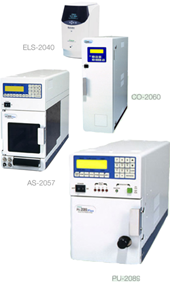
Experimental
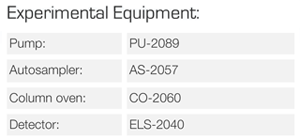
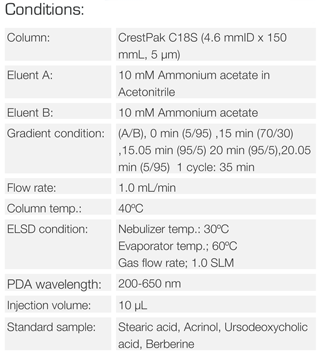
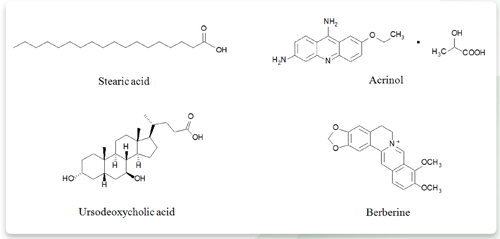
Results
Figure 2 shows chromatogram of the standard mixture while figure 3 shows chromatogram of anti-flatuent. The top chromatogram is from the ELSD and the bottom chromatogram is from the PDA (at 220 nm). Only two ingredients were detected by the PDA, while all four ingredients were clearly detected by the ELSD.
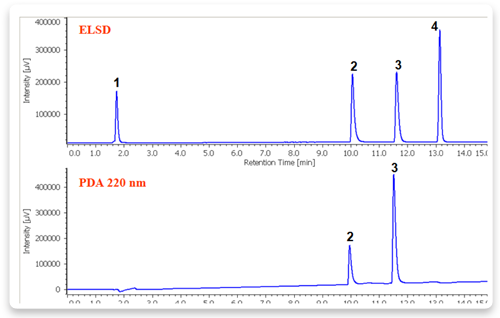
1: Stearic acid (0.5 mg/mL), 2: Acrinol (0.1 mg/mL), 3: Berberine (0.1 mg/mL), 4: Ursodeoxycholic acid (0.1 mg/mL)
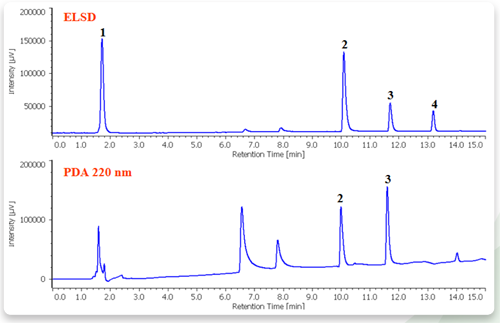
1: Stearic acid, 2: Acrinol, 3: Berberine, 4: Ursodeoxycholic acid
Preparation: A 1.0 mg/mL solution was prepared by dissolving the powder from the crushed anti-flatuent into methanol and sent through the 0.45 µm membrane filter.
Featured Products:

Analysis of Anti-Flatulent Compounds using HPLC-ELSD
Introduction
Medicines contain various active ingredients and for analyzing such ingredients simultaneously, a gradient elution method requiring high sensitive detection is required. When analyzing medicines in gradient mode an evaporative light scattering detector (ELSD) is useful because it can detect almost any compound with the exception volatile components with high sensitivity and provides a stable baseline.
In this report, some ingredients contained in an anti-flatulent were analyzed using ELSD and PDA detection. Stearic acid is used as a lubricant for forming tablets, ursodeoxycholic acid is effective for improving digestion and absorption, acrinol is used as a disinfectant and berberine has antibacterial, anti-inflammatory and gastric mucosal protection effects.

Experimental



Results
Figure 2 shows chromatogram of the standard mixture while figure 3 shows chromatogram of anti-flatuent. The top chromatogram is from the ELSD and the bottom chromatogram is from the PDA (at 220 nm). Only two ingredients were detected by the PDA, while all four ingredients were clearly detected by the ELSD.

1: Stearic acid (0.5 mg/mL), 2: Acrinol (0.1 mg/mL), 3: Berberine (0.1 mg/mL), 4: Ursodeoxycholic acid (0.1 mg/mL)

1: Stearic acid, 2: Acrinol, 3: Berberine, 4: Ursodeoxycholic acid
Preparation: A 1.0 mg/mL solution was prepared by dissolving the powder from the crushed anti-flatuent into methanol and sent through the 0.45 µm membrane filter.

 Download This Application
Download This Application